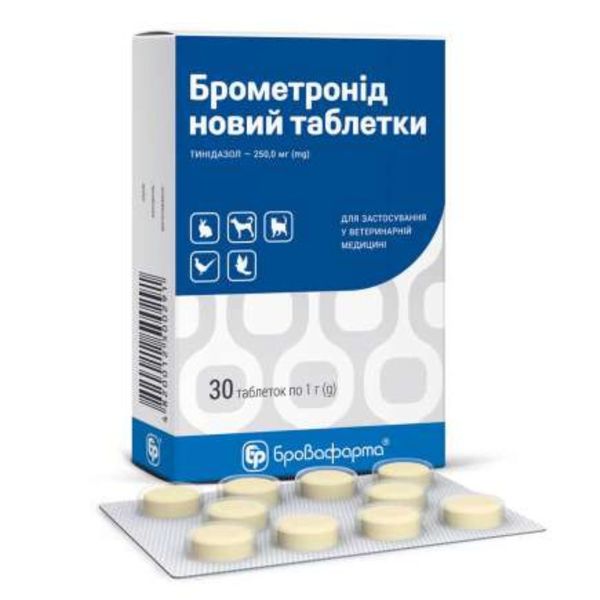|
Quantity
|
Out of stock
|
||
|
|
|||
Tinidazole is a synthetic antibiotic from the nitroimidazole group with a broad spectrum of action on the simplest Balantidium coli, Entamoeba hyslolytica, Treponema hyodysenterie, Histomonas meleagridis, Lamblia intestinalis, Eimeria spp., Trichomonas columbae, T. gallinae, bactericidal action on anaerobes Bacteroides spp., Fusobacterium spp., Clostridium spp., most types of gram-positive cocci - Streptococcus spp., Staphylococcus spp.
Composition
1 g of the drug (1 tablet) contains:
Tinidazole - 250 mg
Description
Tablets are white or light gray, round or oval.
Indications
Treatment of animals with diseases caused by microorganisms sensitive to tinidazole:
ornamental birds (pigeons, pheasants) — histomoniasis, trichomoniasis, eimeriosis, salmonellosis;
decorative rabbits — eimeriosis;
dogs, cats — giardiasis, amoebiasis, trichomoniasis, other anaerobic infections.
Contraindications
Do not administer to animals with hypersensitivity to tinidazole, liver and kidney dysfunction, females in the last third of pregnancy.
Method of administration and dosage
The drug is used orally in the following doses:
ornamental birds (pigeons, pheasants) — 2 tablets (500 mg tinidazole) are crushed and mixed with 1 kg of feed, the course is 10 days;
dogs:
giardiasis, amebiasis — 1 tablet (250 mg tinidazole) per 20-25 kg of body weight, twice a day, course — 5 days;
bacterial anaerobic infections — 1 tablet (250 mg tinidazole) per 18-20 kg of body weight, twice a day, course — 10 days;
cats:
giardiasis, trichomoniasis — 1/4 tablet (62.5 mg tinidazole) per 5 kg of body weight, twice a day, course — 10 days;
bacterial anaerobic infections — 8-10 mg tinidazole per 1 kg of body weight, course — 5-7 days;
fancy rabbits:
adult animals — 1/4 tablet (62.5 mg tinidazole) per 1 kg of body weight with food, once a day, course — 3 days;
young animals during weaning from their mother - 1/4 tablet (62.5 mg tinidazole) per 2 kg of body weight, course - 10 days.
Warnings
Allergic reactions to the drug are rare and usually with prolonged use. They manifest themselves in skin rashes, edema, fever, eosinophilia, etc. If these symptoms appear, the use of the drug should be discontinued and antihistamines should be used. Large doses can cause intestinal dysbacteriosis. After stopping treatment with the drug, these symptoms disappear without special treatment.
When used simultaneously with cimetidine, the activity of the drug increases, and when used simultaneously with phenobarbital and rifampicin, it decreases.
Storage conditions
In a dry, dark place inaccessible to children at a temperature of +8 to +25 °C.
































